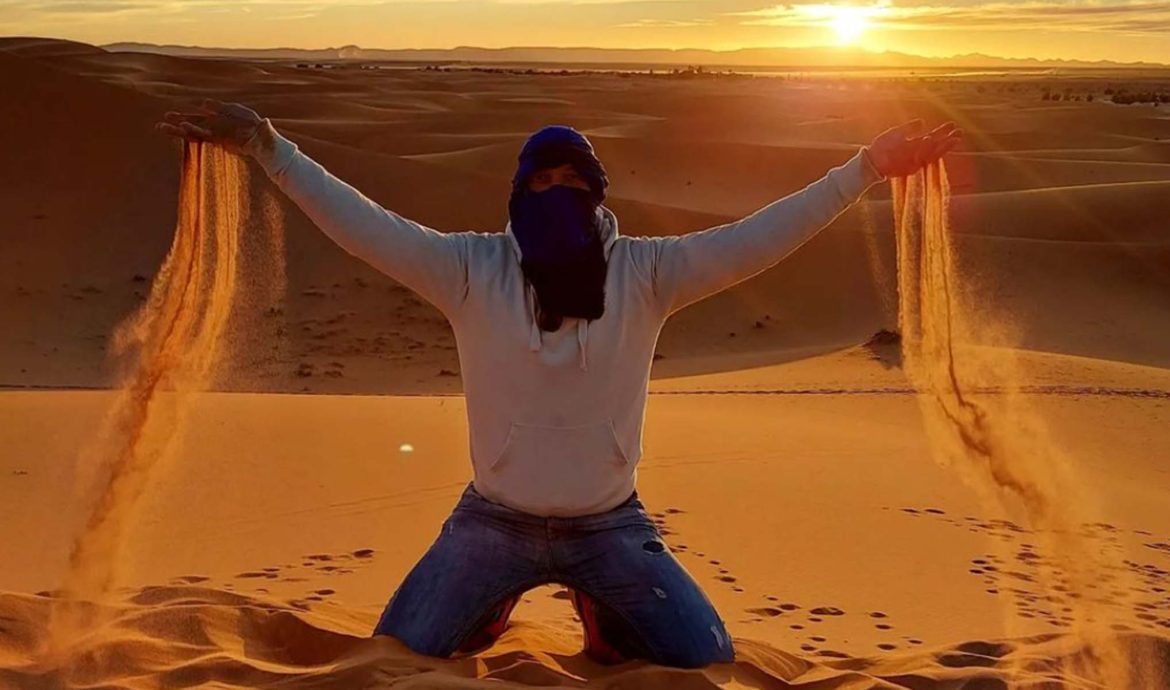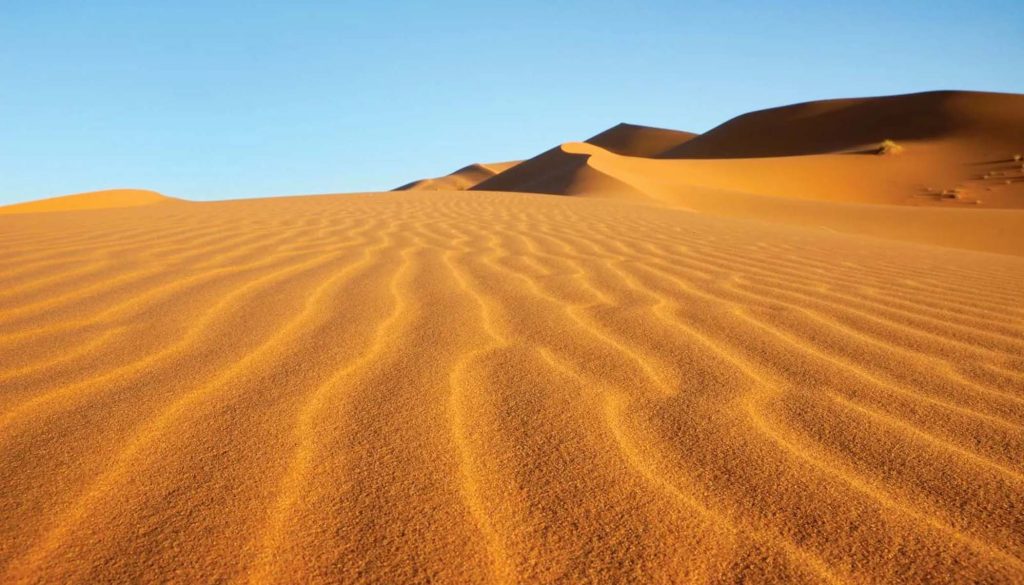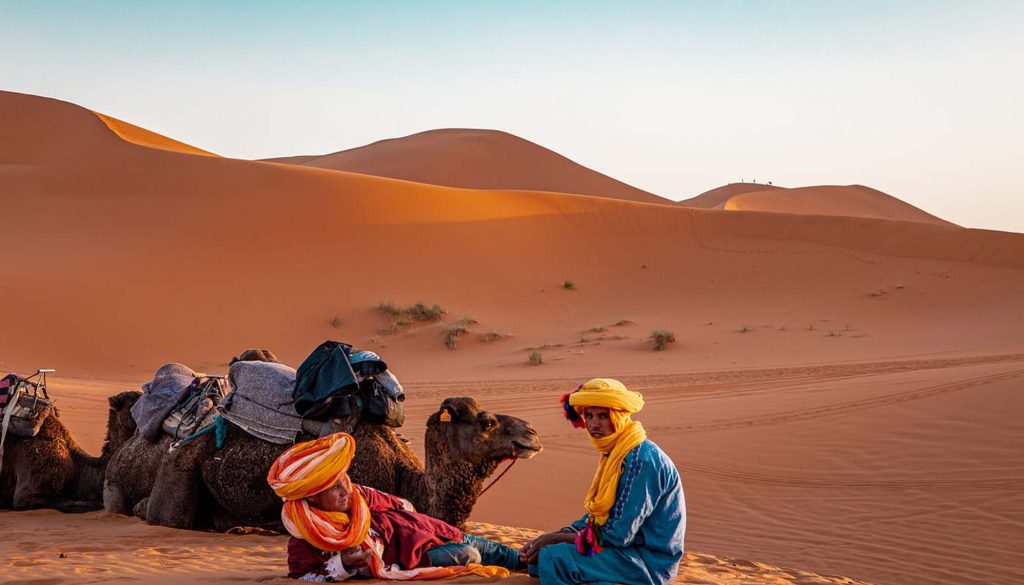
Footprints in the Sand: Hiking Experiences That Capture Sahara’s Essence
HikingRecently, I embarked on a captivating journey to the Sahara Desert, documenting my hiking experiences that truly captured the essence of this magnificent landscape.
Anticipation and Expectations:
The Sahara, with its expansive and undulating golden sand dunes stretching as far as the eye can see, beckoned me with the promise of a hiking adventure unparalleled in its uniqueness. The captivating landscapes of this desert region served as an irresistible invitation to explore a terrain that holds both historical significance and awe-inspiring beauty.
The allure of walking in the footsteps of ancient explorers was a magnetic force, drawing me deeper into the Sahara’s mystique. Imagining the journeys of those intrepid individuals who navigated this vast expanse in eras long past added a profound layer of historical resonance to my anticipation. The echoes of their adventures resonated with each footstep, creating a tangible connection to the explorers of antiquity.
The sheer vastness of the desert, a seemingly endless sea of sand meeting the horizon, fueled my excitement on a visceral level. The prospect of immersing myself in a landscape that transcended the boundaries of familiarity and conventional understanding of nature’s grandeur stirred a sense of wonder. It was not merely a hiking excursion; it was an opportunity to be enveloped by the enormity of the Sahara’s expanse and to witness firsthand the power of nature in shaping such a breathtaking environment.
In essence, the allure of the Sahara lay not only in its physical beauty but also in the emotional and historical resonance that emanated from its golden dunes. The anticipation of a hiking adventure like no other stemmed from the harmonious blend of natural wonders and the echoes of ancient tales that whispered through the winds, inviting me to explore and uncover the secrets concealed within the vast and timeless landscape.
Local Hiking Dynamics:
Traversing the diverse terrain of the Sahara posed a dynamic mix of challenges and rewards, creating a multifaceted experience that left an indelible mark on my psyche. The difficulty levels of the local hikes exhibited a spectrum, catering to a range of expertise, from novice enthusiasts to seasoned adventurers seeking a more rigorous expedition.
As I ventured into the vast expanse of the desert, the contrasting landscapes unfolded before me, offering a mosaic of challenges that tested both my physical endurance and mental resilience. Some routes, thoughtfully designed for beginners, provided an accessible introduction to the Sahara’s wonders, allowing me to acclimate to the unique demands of desert hiking. These paths, adorned with mesmerizing vistas and manageable terrains, served as a gentle initiation into the awe-inspiring world of Sahara exploration.

On the other hand, certain routes demanded the skills of a more seasoned adventurer. The arduous trails, characterized by steep inclines, shifting sands, and rugged terrain, presented a thrilling challenge that pushed the boundaries of my hiking capabilities. Confronting these difficulties invoked a sense of accomplishment, as each conquered obstacle became a testament to my growth as an explorer within the formidable landscapes of the Sahara.
Amidst these challenges, safety considerations took precedence, shaping my approach to the expedition. Local guides, with their profound knowledge of the desert’s intricacies, played an indispensable role in ensuring a secure hiking experience. Their guidance not only navigated us through the labyrinthine trails but also imparted invaluable insights into the desert’s unique ecosystem, enhancing the overall richness of the journey.
The psychological impact of navigating the Sahara’s terrain was profound. The challenges heightened my awareness, fostering a deep connection with the surroundings. Moments of uncertainty were counterbalanced by the rewards of conquering obstacles, creating a harmonious interplay between the rugged exterior of the desert and the evolving landscape of my inner resilience.
In retrospect, the Sahara became more than a geographical expanse; it transformed into a metaphorical landscape where challenges and rewards intertwined, shaping not only the path beneath my feet but also the contours of my personal growth. Each step through the shifting sands echoed the intricate dance of conquering difficulties and savoring the triumphs, ultimately defining the essence of my Sahara hiking experience.
Essential Gear and Supplies:
Embarking on a Sahara hiking adventure necessitated careful preparation. Essential gear included a reliable pair of hiking boots to navigate the uneven terrain, a sturdy backpack for water and supplies, and lightweight, breathable clothing to combat the desert heat. Sunscreen, a hat, and sunglasses were indispensable for protection against the relentless sun.

Overcoming Challenges:
Embarking on the arduous trek through the expansive Sahara, I found myself face-to-face with unexpected challenges that pushed the boundaries of my physical and mental endurance. The relentless elements of the desert, from scorching daytime temperatures to bone-chilling cold nights, created a relentless gauntlet that tested my resilience with each passing moment.
The searing heat of the Sahara’s daytime sun bore down upon me, intensifying the physical demands of the journey. The air shimmered with waves of heat, creating a surreal mirage that seemed to dance on the horizon. As beads of sweat formed on my brow and the sun cast long shadows across the ever-shifting sands, the harsh reality of the desert’s unforgiving nature became palpable. It was a test of endurance, a relentless trial that required a steadfast determination to push forward despite the oppressive heat.
The challenges didn’t relent with the onset of night; instead, they took on a new form. The bone-chilling cold that descended upon the desert after sunset was equally demanding. The temperature plummeted, and the vast expanse that had been scorching hot just hours before now became an icy realm. Bundling up against the cold became imperative, and the contrast between the extreme temperatures tested not only my physical resilience but also my ability to adapt swiftly to the capricious nature of the Sahara.
Navigating the shifting sand dunes introduced an element of unpredictability that added an extra layer of complexity to the journey. Each step through the soft, undulating surface required careful consideration, as the dunes seemed to morph and reshape with every breath of the wind. The landscape became a maze of ever-changing contours, demanding heightened focus and adaptability to ensure safe passage through the shifting terrain.
Amidst these challenges, the camaraderie with my fellow hikers and the experienced guide became an anchor in the vast and unpredictable expanse of the Sahara. Mutual support and shared encouragement fostered a sense of unity, transforming the obstacles we faced into opportunities for collective triumph. The shared struggle against the elements created a bond that transcended the physical demands of the journey, forging a connection that felt as enduring as the timeless sands beneath our feet.

In the crucible of the Sahara, where challenges tested the limits of endurance, the journey became not just a physical exploration but a profound inner odyssey. The desert’s harsh conditions served as a mirror reflecting my resilience, determination, and the transformative power of collective effort in the face of adversity.
Psychological Reflections:
The solitude of the desert evoked profound introspection. The rhythmic sound of footsteps in the sand echoed the timeless journey of those who had traversed the Sahara before me. Amidst the vast emptiness, a sense of awe and humility settled within, highlighting the transient nature of human existence against the backdrop of the timeless desert.
Hiking Checklist:
- Sturdy hiking boots
- Backpack with sufficient water supply
- Lightweight, breathable clothing
- Sunscreen, hat, and sunglasses
- Navigation tools (compass, map, or GPS)
- Emergency first aid kit
- Snacks for sustenance
- Portable shelter or sleeping bag for overnight hikes
January Considerations:
During the initial days of January, embarking on a Sahara hiking expedition requires a heightened awareness of the temperature dynamics that characterize this desert landscape. The transitional nature of the climate during this period introduces notable fluctuations, posing unique challenges that demand careful consideration from hikers.
In the Sahara, daytime temperatures in the early days of January can be deceptively warm, luring hikers into a false sense of comfort. The sun’s rays, even in the midst of winter, can be intense, casting a radiant warmth upon the sandy expanse. However, as the sun sets, the desert undergoes a rapid transformation, and the nights unveil an unexpected chill. The temperature drop in the desert after sunset can be surprisingly sharp, catching unprepared hikers off guard.
To navigate these temperature extremes successfully, hikers must prioritize adequate layering and meticulous preparation. Daytime apparel should be lightweight, breathable, and capable of shielding against the sun’s intense rays. As the evening descends and temperatures plummet, having layers to add provides a crucial defense against the cold. A well-thought-out combination of moisture-wicking base layers, insulating mid-layers, and wind-resistant outer layers can be adjusted to accommodate the shifting conditions seamlessly.
Footwear choice is equally important during these temperature fluctuations. Sturdy and supportive hiking boots that provide insulation against the cold ground are essential, ensuring both comfort and protection throughout the journey. Additionally, packing essentials like a warm hat, gloves, and a reliable sleeping bag or portable shelter becomes imperative for a comfortable night’s rest in the chilly desert environment.
Preparation for the extremes of temperature not only enhances comfort but is also paramount for ensuring the safety of the hiking experience. Hydration remains a constant concern, and water intake must be regulated according to the exertion level and the climatic conditions. Protecting oneself from the sun with sunscreen, a hat, and sunglasses during the day remains crucial, while being equipped to combat the cold during the nights ensures a well-rounded and secure hiking experience.
In conclusion, the early days of January in the Sahara present a unique blend of warm days and cold nights, demanding a strategic approach to clothing and gear. By being mindful of these temperature fluctuations and adopting a comprehensive preparation strategy, hikers can transform potential challenges into opportunities for a comfortable, safe, and memorable adventure through the enchanting landscapes of the Sahara.
In conclusion, my Sahara hiking experience left indelible footprints in the sand, both physically and metaphorically. The challenges faced, the camaraderie formed, and the awe-inspiring beauty of the desert made this journey an unforgettable chapter in my travel blog.
You may also like
Recent Posts
- How to Plan the Perfect One-Day Darwin Adventure: A Guide for First-Time Visitors
- Direct Flights from Sydney to Darwin: A Quick Journey to the Northern City
- The Ultimate Guide to Choosing the Perfect Hiking Boots: Gear Up for Your Adventure with Scheels
- Unmissable Darwin Sunsets: Beautiful Moments Along the Coastline
- Gear Up for Adventure: Essential Women’s Hiking Apparel for Every Trial, Available at Scheels
About me & the blog

I am Slavoljub Vukovic, a former professional basketball coach who now works full-time in the travel blogging industry, while also pursuing a career as a freelance photographer.
On the blog, I share detailed hiking travel guides and hiking routes in various countries, including important tips and essential items lists.


Leave a Reply